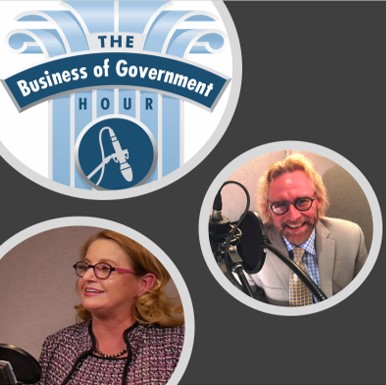
Insights on Federal Government IT

Suzette Kent, former Federal Chief Information joined me on The Business of Government Hour to offer insights on her tenure as federal CIO and what's next in federal IT. Here are highlights of our conversation. Please listen to the entire interview and subscribe to the show at https://apple.co/31LZPOR.
Making federal IT policy current was my main focus. The federal CIO focuses on the development of IT policy and ensuring that federal agencies are meeting statutory requirements as well as achieving the key priorities of the current administration. I wanted to empower and enable federal agency CIOs to take advantage of the best technology available to them. Federal IT policies should not be obstacles, but enablers. It is why we worked on IT modernization and digital transformation enhancing the quality of services delivered to citizens. This has been a singular goal of a federal IT community composed of over 90,000 individuals and $92 billion budget. I came to federal service from the private sector. I spent almost thirty years in financial services and global technology, leading largescale transformation in very regulated industries. Coming to federal service, I looked at the situation in terms of identifying best practices and making a difference with an emphasis on citizen expectations, digital delivery, cost factors, and scale of operation. My job was to deliver on the obligations of this office as they exist in law, the priorities of the administration, but most of all, to be an enabler for agency specific missions.
Refreshing the government’s shared services strategy has been integral to identify opportunities that improve stewardship of taxpayer dollars, to create high-performing, centralized capabilities for mission-support functions and to make more resources available for agency mission-specific work. We want to see not only development of a robust marketplace, but improvement of services going to agencies. We see agencies move faster in adopting these practices realizing not only improved services but also common expectations of these services. As the system matures, we will recognize more efficient delivery, which may result in better cost structure and improved services. The effort will continue toward establishing a sustainable shared services ecosystem to lower costs and ensure best practices and modern infrastructure pervade government. Much of our strategy has been based on industry experiences and lessons learned that can help agencies identify mission support functions suitable for sharing based on cross-agency agreement on targeted outcomes and service delivery standards. No doubt OMB will continue to engage federal agencies to ensure that this strategy is driving standardized processes, creating efficiencies, and bringing enabling technologies to the government to improve mission work.
Digital transformation will continue in agencies and expand across the federal IT enterprise. It is one thing to take a paper-based process and digitize it on the web and quite another to focus on a purposeful reengineering of a process. We need to continually ask how a process can be made more efficient, more effective, and better and how can technology enable that. The next vista in this digital transformation is focusing on truly changing the way services are delivered to meet the evolving needs and expectations of the people government agencies serve.
Identify management is critical for how government services are requested and what serves are delivered. When government tries to do good there are external parties that perhaps seek to do bad. We talk about zero trust as a concept and government is making progress on the concepts of zero-trust. We have seen successful alignment of where we need to go with advanced identity management, strong network foundations, use of data matched to the mission and the function of that individual. There are many things we can do and are doing. The more secure we can make an interaction and the more trust we build with the citizens that we are serving. Federal systems and networks have an obligation and a duty to protect the personal information of the citizens its serves. Protecting customer information is the lifeblood of many of the industries in which I worked. As government does more in mobile and on digital channels, agencies will need to harden how they identify individuals. As federal CIO, we updated the identity policies to reflect the difference between human activities and bots or automation tools. We in the U.S. have a perhaps a unique view of identify management, which may reflect the emphasis we place on privacy as a key American value. As we collect information and use data more, government is going to have to embed the right approach to identity management into the evaluation of incoming information and access to that information, which balances privacy, security, and choice. Identity management and security will continue to be a priority as government agencies expand digital capabilities.
IT modernization is a journey. It is pleasing to see more congressional interest lately. There was the hearing on IT modernization, the report on the FITARA scorecard, discussion about the Technology Modernization Fund (TMF), and Senator Hassen’s letters to agencies. We have had some laws passed on both digital and information management. These efforts elevate the IT modernization discussion, which can lead to dedicated resources, money, and attention to continue this modernization journey. Agencies will need to continue to support existing legacy systems while doing that extra work of transitioning to new and more efficient systems. True transformation is rethinking systems and processes, which requires disruption and collaboration of many different disciplines. This is a different type of journey inside the federal government. In the end, we must keep in mind that the investment in people must be side by side with our investment in software, equipment, and transformation.



